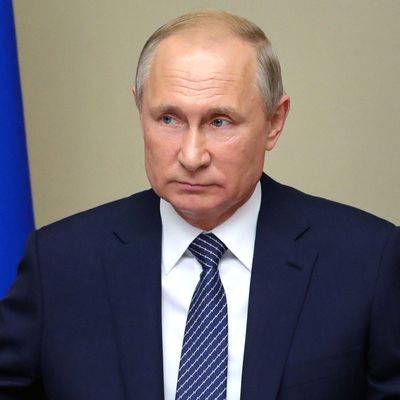
On Thursday, August 8, Russia’s state nuclear-energy company, Rosatom, announced that two military personnel had been killed in an explosion at a military testing site outside Severodvinsk, a city on the White Sea with restricted access for foreign visitors. Rosatom initially attributed the casualties to a rocket-engine blast; using a Russian idiom, the state corporation issued a collectivist lament: “A bright memory of our comrades will forever live in our hearts.”
The aftermath of the explosion brought another familiar Russian concern: the possibility of a cover-up of a nuclear event. Within hours of the explosion, scientists in Severodvinsk clocked a spike in radiation, though the report was cleared from its website shortly after. By Friday, a Russian maritime authority had cut off shipping access in the surrounding bay for a month; a nuclear-nonproliferation group identified a specialized ship frequently used to carry liquid radioactive waste within the exclusion zone near the explosion; pharmacies in the region began to run out of iodine, believed to be a first line of defense against radiation sickness; and a Russian news site published a video in which personnel injured by the explosion were taken to a hospital in Moscow in ambulances sealed with plastic, in an apparent attempt to prevent contamination. An evacuation of a nearby village was planned, then canceled.
By Saturday, Rosatom was correcting its casualty count, adding that five scientists “tragically died testing a new special product,” and confirming that radioactive materials were involved in the explosion. But the state’s vague confirmation — detailing the explosion of an “isotope power source for a liquid fueled rocket engine” — did more to ignite inquiry than quell speculation. U.S. intelligence officials suspect that the event was related to a prototype of Russia’s proposed “Skyfall” missile system, which the New York Times describes as a “cruise missile that [Vladimir] Putin has boasted can reach any corner of the earth because it is partially powered by a small nuclear reactor, eliminating the usual distance limitations of conventionally fueled missiles.” Announced last year in Putin’s state-of-the-union speech, the proposed missile class could be a doozy. Per the Times:
In several recent Pentagon and other government reports, the prospect of a Russian nuclear-powered cruise missiles has been frequently cited as a potential new kind of threat. They are launched into the air and able to weave an unpredictable path at relatively low altitudes.
That makes them virtually unstoppable for the existing American antimissile systems in Alaska and California, which are designed to intercept intercontinental ballistic missile warheads in space, traveling a largely predictable path.
But the science of the “doomsday weapon” would have to be mastered first: “Many outside arms experts have long regarded his effort as part fantasy, using a technology the United States tried and failed to make work in the 1950s and 1960s.” American intelligence is reportedly investigating whether the nuclear reactor was an accidental failure or an intentional explosion.
Almost two weeks after the explosion, details of cover-up efforts continue to emerge. Doctors treating blast victims were not informed that they could be exposed to radiation. “No one — neither hospital directors, nor Health Ministry officials, nor regional officials or the governor — notified staff that the patients were radioactive,” a surgeon at the Arkhangelsk Regional Clinical Hospital told the Moscow Times. And on Monday, Lassina Zerbo, the head of the Comprehensive Nuclear Test Ban Treaty Organization, told the Wall Street Journal that two radiation detectors stopped transmitting data two days after the August 8 explosion.
The suppression of information, the proposed evacuation, the unclear comments from the state have all been spurring inevitable comparisons to the Chernobyl disaster, in which the government delayed its reaction and misreported radiation levels, resulting in profound levels of radiation exposure. The 1986 meltdown is far from a thing of the past: In late 2018, Ukraine inaugurated the Chernobyl New Safe Confinement Structure, a tornado-proof metal shelter larger than a football stadium designed to enclose the radiation still leaking from the reactors.






























